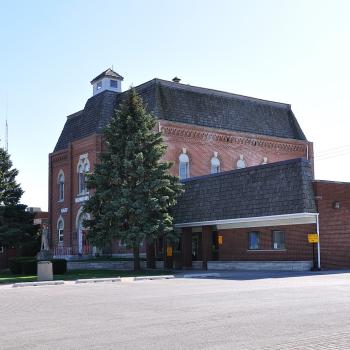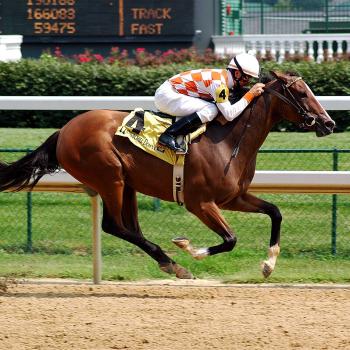So we’re visiting my parents in Detroit for a couple days (yeah, we had The Talk with them about moving to a condo; they replied “we’ll think about it. But that’s another story), and we headed out to the Detroit Historical Museum for the afternoon.
Well, it was a short visit, actually, as it’s a fairly small museum: the Streets of Old Detroit is a nice reconstruction of Detroit in the 1900s, 1870s, and 1840s, with a general store, a fire house, a drug store, and so on; there’s a room on automobiles the centerpiece of which is an assembly line with a “body drop”; there’s an exhibit on Detroit history from 1701 to 1901 with a trading post and such; an exhibit on Detroit and WWII, and that’s basically it. A few smaller exhibits, and a special exhibit area. Happily, it’s a free museum, and it’s not that far a drive, so it works reasonably well as a way to get out of the house. If we’d been willing to spend money, we could have gone across the street to the Art Institute, or down the block to the Science museum.
And on the way back, we decided (we probably wouldn’t have been this daring without a GPS) to engage in some Ruin Porn sightseeing, and headed north without getting on the highway. We started off driving through/at the edge of the Wayne State University campus, but very quickly found ourselves in the stereotypical Detroit neighborhood, a mix of what were once solid brick houses, now a mix of occupied, boarded up, and torn down. Then, suddenly — a patch of nice homes, as we had stumbled upon the Boston Edison historic district (association website here, and Wikipedia article here). It’s a lovely neighborhood, really — you can buy this home, at 10 Longfellow Street, for $245,000, and it looks quite beautiful inside.
That being said, it’s the most expensive home in the neighborhood, and if that doesn’t quite fit the budget, there’s another house at 1540 Longfellow, for $4,999. Yes, that’s not a typo. You really could put this house on your credit card. The roof’s caved in, along with other major problems — but in any other city, the land alone in a major historic district would be worth more.
Just for fun, the association lists all houses for sale in that district, so you can find one in the right state of disrepair to suit your budget.
But the spooky thing is that Boston Edison is an island surrounded by ruin. I would have expected that it would have been walled off in some way, but it’s a very narrow area, only four streets wide, and as soon as you pass Boston Boulevard, you end up in the same depressing mix of decay, with more boarded up homes and vacant lots. How could you feel safe there?
Consider Chicago — yes, it’s got plenty of poor areas, the sort where you’re more likely to read about shootings occurring than anything else, where the kids growing up there don’t know anything about what it means to hold a job, where the schools just give free breakfast, lunch, and dinner to everyone. But even there — there’s at least some value to the land. Houses aren’t demolished to such a degree that city promoters talk about urban farming as a way forward, and, effectively, shutting down various neighborhoods in the city by concentrating funds on more viable neighborhoods. And — some time ago by now — I read an article that detailed attempts to gentrify Brush Park, another old, wealthy neighborhood, and, more recently a further article describing the decay as abandoned Brush Park homes were slowly dismantled by scavangers taking every possible piece of scrap metal out of the home.
So, how does a city recover from this? Does a city recover?












